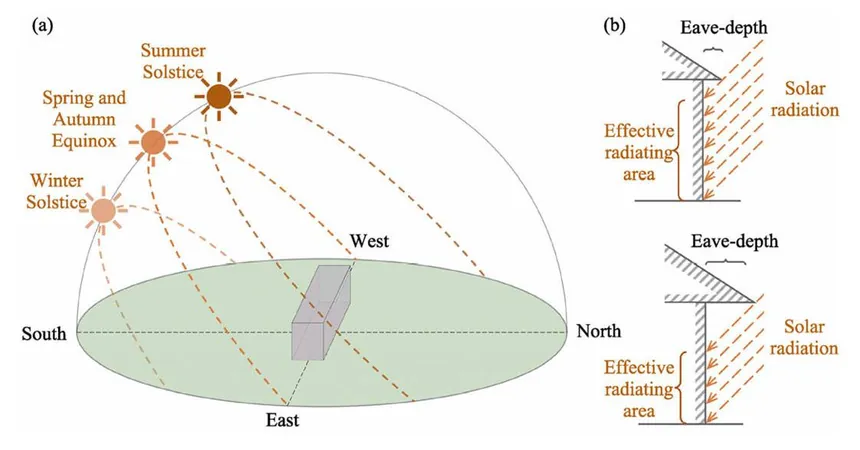
Climate Change: The Secret Force Shaping Ancient Chinese Architecture
2025-08-16
Author: Jacques
Unlocking the Ancient Mystery
A groundbreaking new study has uncovered how the drastic climate changes of ancient China reshaped its architectural landscape. Researchers from the Chinese Academy of Sciences have revealed that between the 3rd and 6th centuries, a significant decline in the use of projecting arms—key components of the beautiful bracket sets, or dougong—was directly influenced by extreme climate shifts.
From Aesthetic to Adaptive
Traditionally viewed as a matter of artistic preference, the sudden disappearance of these architectural features has now been reinterpreted as a necessary adaptation. This transformation was prompted by severe cooling and drying weather conditions, forcing builders to redesign eaves for better solar exposure. The findings assert that ancient Chinese architecture was an agile system that responded effectively to environmental stress.
Climate Crisis and Civilization
Throughout history, climate change has posed challenges to civilizations globally. While droughts in the Mayan culture and societal shifts among the Norse are well known, the impact on everyday architecture often goes overlooked. In the case of ancient China, structures made from wood and earth became acutely linked to their climate.
Scientific Breakthroughs and Historical Insights
In their research published in the Journal of Geographical Sciences, the team used data from around 250 archaeological artifacts spanning several centuries. They identified key periods where climatic downturns dramatically reduced rainfall and characterized winter conditions, leading to shorter eaves that enhanced sunlight on building walls by up to 35%. This adaptation was meticulously timed with climatic fluctuations, proving that these architectural changes were driven by survival rather than artistic whim.
A Message from the Past for the Future
Dr. Li Siyang, the lead author of the study, emphasizes that this isn't merely a tale of forgotten craftsmanship; it exemplifies human resilience in the face of climate challenges. Our ancestors actively engineered their surroundings to thrive in difficult conditions. The adaptation seen in architectural design showcases the intersection of functionality and climate awareness.
Building Sustainable Futures
In today's context of extreme climate change, the lessons gleaned from these ancient strategies offer renewed insight for modern architects. The principles of passive solar heating are essential now more than ever, aligning perfectly with contemporary sustainable architecture goals, such as China’s ambitious 2060 carbon neutrality pledge. Bridging traditional techniques with modern technology can result in buildings that are not only effective but also environmentally responsible.
Connecting History to Modernity
This remarkable study highlights how historical insights are not relics of the past but vital blueprints for future designs. By understanding the climate-responsive principles of ancient Chinese architecture, we can foster a new generation of sustainable structures tailored to meet our environmental demands.









 Brasil (PT)
Brasil (PT)
 Canada (EN)
Canada (EN)
 Chile (ES)
Chile (ES)
 Česko (CS)
Česko (CS)
 대한민국 (KO)
대한민국 (KO)
 España (ES)
España (ES)
 France (FR)
France (FR)
 Hong Kong (EN)
Hong Kong (EN)
 Italia (IT)
Italia (IT)
 日本 (JA)
日本 (JA)
 Magyarország (HU)
Magyarország (HU)
 Norge (NO)
Norge (NO)
 Polska (PL)
Polska (PL)
 Schweiz (DE)
Schweiz (DE)
 Singapore (EN)
Singapore (EN)
 Sverige (SV)
Sverige (SV)
 Suomi (FI)
Suomi (FI)
 Türkiye (TR)
Türkiye (TR)
 الإمارات العربية المتحدة (AR)
الإمارات العربية المتحدة (AR)